What is handball? How to play it, rules and regulations explained
Other Sports
What is snooker? Can you differentiate it with Pool and Billiards? For the non-professional players, it is easy to see their tables as the same thing. Snooker is a popular sport in many countries, especially in the United Kingdom and other parts of Europe, as well as in China and other parts of Asia.
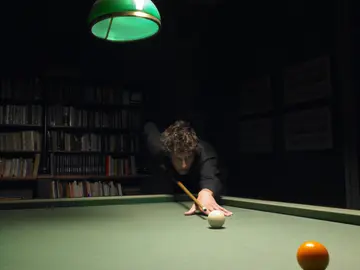
Snooker is a cue sport played on a rectangular baize-covered table with six pockets—one in the middle of each long side and one in each corner. It is a game played with a cue stick and a set of 22 balls, including one white (the cue ball) and 15 red in addition to six other coloured (yellow, green, brown, blue, pink, and black).
Using a cue stick, each player or team alternately strikes the white to pot other balls in a set order, earning points for each successful pot and each foul the other team commits. In a single frame, the player with the most points wins. The snooker match is over when a player wins a certain number of frames.
What is handball? How to play it, rules and regulations explained
Other Sports
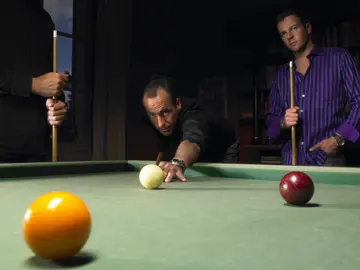
Snooker was first played by British Army officers stationed in India in the latter part of the nineteenth century. Army officer Sir Neville Chamberlain, stationed in Ootacamund, Madras, and Jabalpur, created a set of rules that combined black pool and pyramids in 1875, giving the game its name.
Snooker was a well-known insult for inexperienced or newly enlisted military personnel. It was primarily played in the United Kingdom in the early 20th century, where it was regarded as a "gentleman's sport" until the early 1960s. From there, it became a national pastime and eventually spread abroad. The game's standard rules were established when the Billiards Association and Control Club was founded in 1919.
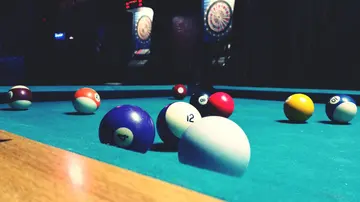
Snooker is played with 15 numberless pinks, six numbered objects, and one white, while Pool is played on a table with six pockets, with 9 to 15 object balls, and in addition, the white. Snooker is played on a table with six pockets, but the table size is usually larger than that of pool tables. The snooker table's pockets, however, are smaller.
Hardest skateboard trick: Which are the 10 hardest skateboard tricks to land?
Other Sports
This table is a rectangle with dimensions of 12 feet by 6 feet and a height of just under 3 feet. It is typically made of wood and has a slate top covered in green baize. It has six pockets: two in the centre of the long sides or cushions and one in each of the four corners.
The baulk end, from which the game begins, is marked by a line that spans the table's width 29 inches from the baulk cushion. In the centre of this is the D, an 11.5-inch-radius semi-circle with the baulk line as its diameter.
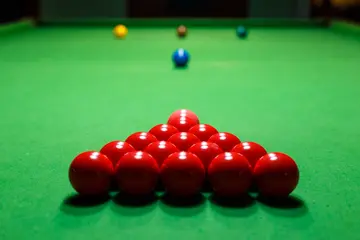
Nowadays, snooker balls are made of cast phenolic resin, a light plastic resin that provides much more control, in contrast to earlier materials like clay and ivory. They may be created in separate moulds or as a strip that is cut apart after hardening. Thermosetting plastic is heated, poured into moulds, allowed to harden, and then sanded and polished into balls.
What is pickleball and how do you play it? Rules and regulations of the game
Other Sports
Cues are tapered sticks typically between 57 and 59 inches (about 1.5 metres) long and used to strike a ball. Most cues are made of wood, but they also frequently have fibreglass, carbon fibre, or graphite layers.
The size of the tips is where a pool cue and a snooker cue diverge most. Other variations include the type of wood used, the ferrule material, and occasionally the size and weight of the cue. Both sets of cues were created based on the specifics of the intended game.
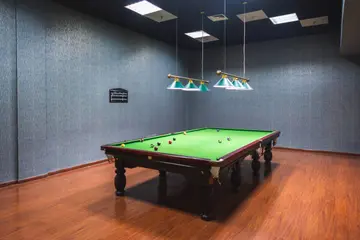
This is a location where the players gather to play snooker. The room may be in the public centre of the house or the private areas of the house. Additionally, the space needs to be well-lit and have enough space to play games.
They are known as referees. The road to becoming a well-known snooker referee is complex. Prior to being given a chance to officiate at The Crucible, years of practice are necessary to learn and perfect the science of officiating.
What are the rules of curling? Understanding curling as a sport
Other Sports
Not every young game enthusiast will aspire to be a top-level referee. Naturally, upholding the rules in any sport involves pressure, scrutiny, and frequently stressful circumstances. Below are the rules of snooker
Who is the prettiest tennis player in the world at the moment?
Tennis
Snooker requires a great deal of precision, and coaches frequently have a deeper understanding of the technical foundations of the game. Receiving instruction from a snooker professional can help one's game, regardless of whether the goal is to improve hard technical skills or soft positioning abilities that develop over time.
READ ALSO: The different types of pool games and how to play each of them
Sportsbrief has published an article about the different types of pool games and how to play each. A pool game is a cue sport played on a carpeted table with six pockets along the rails, into which balls are deposited. There are different pool games categorized by different sets of balls. Click the above link to read more!